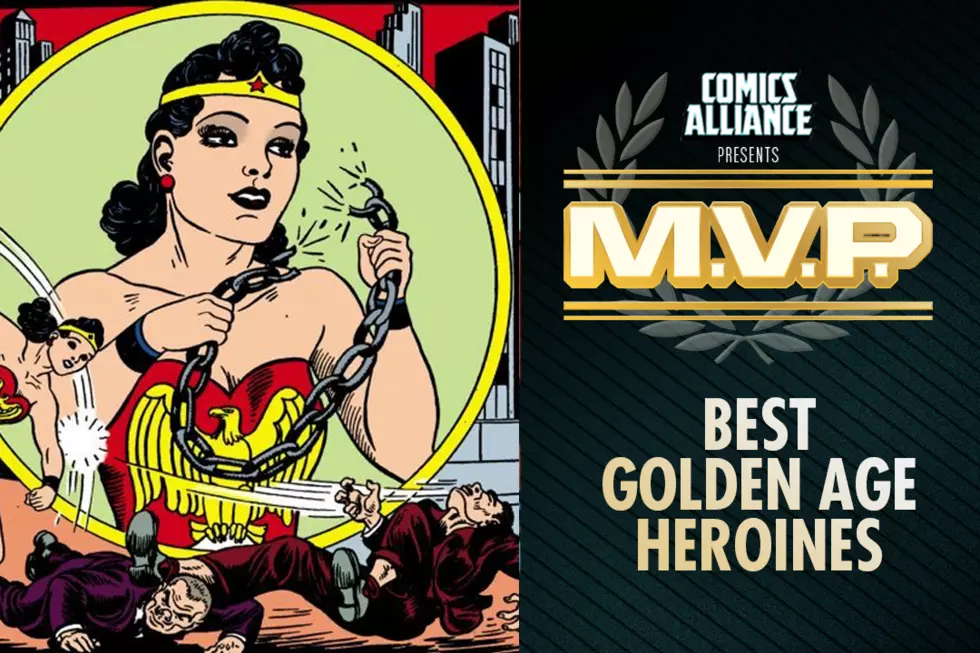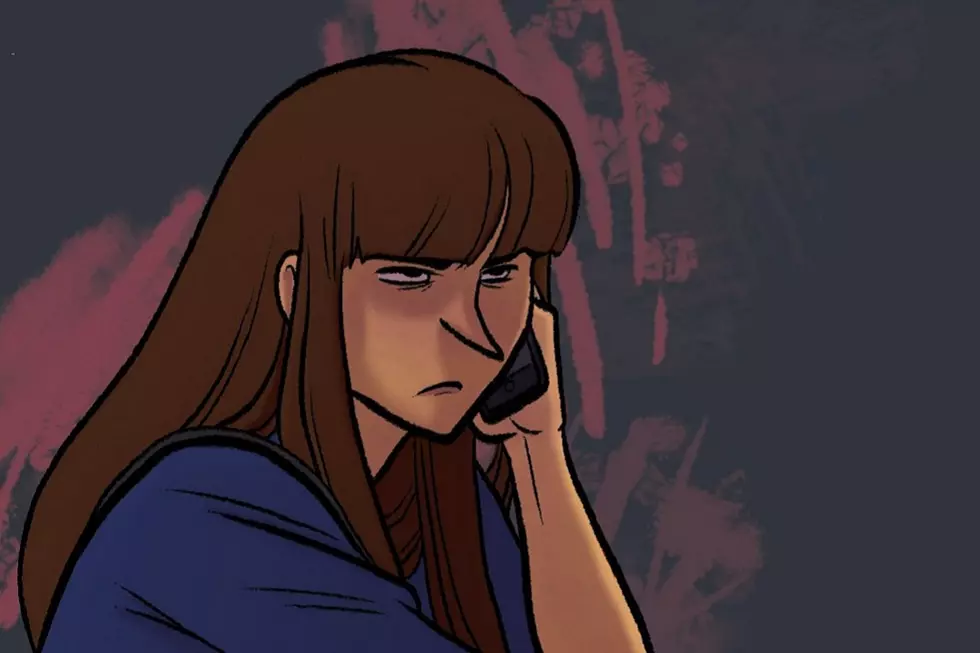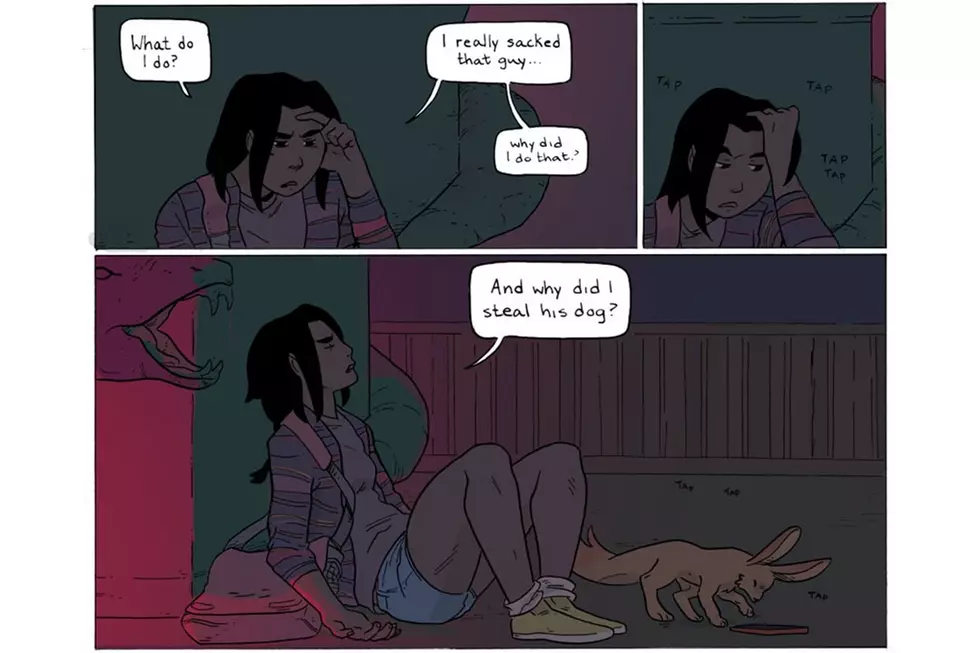The Revolution Will Be Pastel: ‘Bee & Puppycat’ Embraces Manga, The Web And Femininity To Maximum Effect [Video]
Bee and Puppycat is really, really cute. It is also funny, bizarre, and occasionally wistful. Above all though, it is cute: there’s the pastel palette, the fat pink bows on Bee’s shoes, the warm roundness of its characters, literally everything about Puppycat. Its absurdism is soft and its softness is absurd -- “I got fired today,” Bee intones flatly, the rain spattering her cat-faced pinafore dress. She’s a dumpster-diving Sanrio character, Strawberry Shortcake late for her appointment at the temp agency. The beginnings of a plot prod gently at her from time to time, but never with anything like urgency -- two issues into its run, Boom! Studios' Bee and Puppycat comic has meditated on strawberry donuts, embarrassing pajamas, and platform shoes, but not much else. Creator Natasha Allegri (along with collaborators Madeleine Flores and Garrett Jackson) would rather devote three pages to QR-coded music boxes than set about untangling Puppycat’s origins or the nature of their magical, mysterious employer.
In these qualities, Bee and Puppycat is right in line with Adventure Time, Steven Universe, and Bravest Warriors, its closest brethren in tone and form. Beyond the creator overlap between the four franchises and the fact that all of them now span both animation and comics, they’re all content to hunker down in that pocket of the zeitgeist that brings together childhood nostalgia and bizarre Internet-age humor, where atmosphere reigns over plot.
But Bee and Puppycat stands out among them, and marks a sea change in comics -- particularly in how franchises are formed, what is considered marketable, and what demographics are seen as worthy of being catered to. In its weird, witty way, I believe that Bee and Puppycat emblematizes the future of this industry.
There is, most obviously, the newness of its format. Like Bravest Warriors, Bee and Puppycat debuted as a web series on Frederator’s Cartoon Hangover YouTube channel. After two episodes comprising only ten minutes of material, Allegri's Kickstarter managed to raise nearly $900 thousand for more episodes. Now Bee and Puppycat has a comic, dozens of We Love Fine shirts, and a steady buzz going wherever cartoons and comics are discussed. Even a scant few years ago, it would have floundered, but in an age where Web-exclusive animation and crowdfunding are very established concepts, Bee and Puppycat has thrived.
Beyond format, though, Bee and Puppycat marks a significant generational shift in animation and comics. Natasha Allegri is thoroughly a product of the 1990s and 2000s, and those decades’ premiere geek properties have left their mark all over her work, with Japanese manga being the most obvious influence. From her mundane beginnings to her glittery transformation sequence, Bee is a magical girl through and through, the classic shoujo heroine in everything from her tentative love life to the fairy tale elements Puppycat’s backstory brings into the mix. Here is a series that stands on the shoulders of Naoko Takeuchi and Rumiko Takahashi rather than Claremont and Kirby; here is a creator raised on Jim Davis and CLAMP.
Manga’s influence on this generation’s creators has been felt in webcomics for a while, but only now are we seeing its effects within the established mainstream industry. The story beats and visual grammar of Bee and Puppycat are subtle in their differences from established US fare, but it is those differences that connected with today’s audiences to the tune of $900 grand. They know Bee is a magical girl. They know Puppycat has as much in common with Luna and Artemis as he does Snoopy. And they’re responding to it, because that’s what they grew up with too. Geeky kids of the 1990s and 2000s might not have kept up on DC and Marvel, but their bookcases were heavy with Naruto and Fruits Basket -- now, finally, someone in the American market is speaking their language.
And that language is, to be frank, girly. This is what strikes me the most about Bee and Puppycat, what sets it apart similar works, what made its Kickstarter such a triumph, and what will make it a long-term success. Bee and Puppycat is markedly, unabashedly feminine. It’s not just drawing on manga -- it’s drawing on shoujo manga, and mahou shoujo in particular. To wit, Bee is a normal girl, a deadpan slacker 20-something with a burgeoning romance, a magical quest, and a cute sidekick, all done up in literal ribbons and bows. Puppycat himself has a dreamy past -- the story heavily implies he was once a handsome outlaw who fell disastrously in love with a princess.
Adventure Time, Steven Universe, and Bravest Warriors are all girl-friendly, but not on Bee and Puppycat’s level -- Bee and Puppycat was influenced by the work of women, is produced by a woman, and appeals explicitly to women. Many of my male friends love Bee and Puppycat as well, but it’s my female friends that got really into its Kickstarter, splashed their Tumblr blogs with fan art and began planning cosplay. Bee and Puppycat is for them in the way most entertainment is for men -- it puts them, their experiences, and their tastes first. Men are absolutely welcome to enjoy the ride as well, but they aren’t, for once, the number one priority.
Clearly, it’s working. The animated Bee and Puppycat has been on hiatus for months, but anticipation remains strong (witness We Love Fine’s recently released collection of “Bee and Puppycat Summer Fan Fashion.”) Bee and Puppycat is a mixture of traits that, alone, would have made it unique, but together make it unlike anything else on the market. In format, influence, and content, it is making good on ideas that, until recently, remained largely theoretical: Web-exclusive animation, animation aimed at an older audience that doesn’t depend of ribald humor, Western manga-influenced work that doesn’t completely suck, and the viability of work aimed at female fandom.
Which is funny, because so far Bee and Puppycat is a quiet, low-key sort of show and comic book. I didn’t come away from it thinking, “good lord, what an incredible paradigm shift!” -- I read the second issue and felt an affinity for it that, I realized, I hadn’t ever felt for an American comic book. It felt sweet and fun and silly. It felt like a sign of change. A quiet, subtle sign, but a sure one, and one that’s been a long time coming.
I’m excited for more Bee and Puppycat, and heartily recommend it to anyone who asks -- and I am just as excited for what will come after. The revolution, it seems, will be pastel.
Bee and Puppycat #1-2 are on sale now in finer comics shops and digitally from BOOM! Studios.
More From ComicsAlliance
![When Everything Is Pink, Nothing Is Pink: Sarah Stern On Color And Creativity [Interview]](http://townsquare.media/site/622/files/2017/03/Cindersong-feat.jpg?w=980&q=75)








